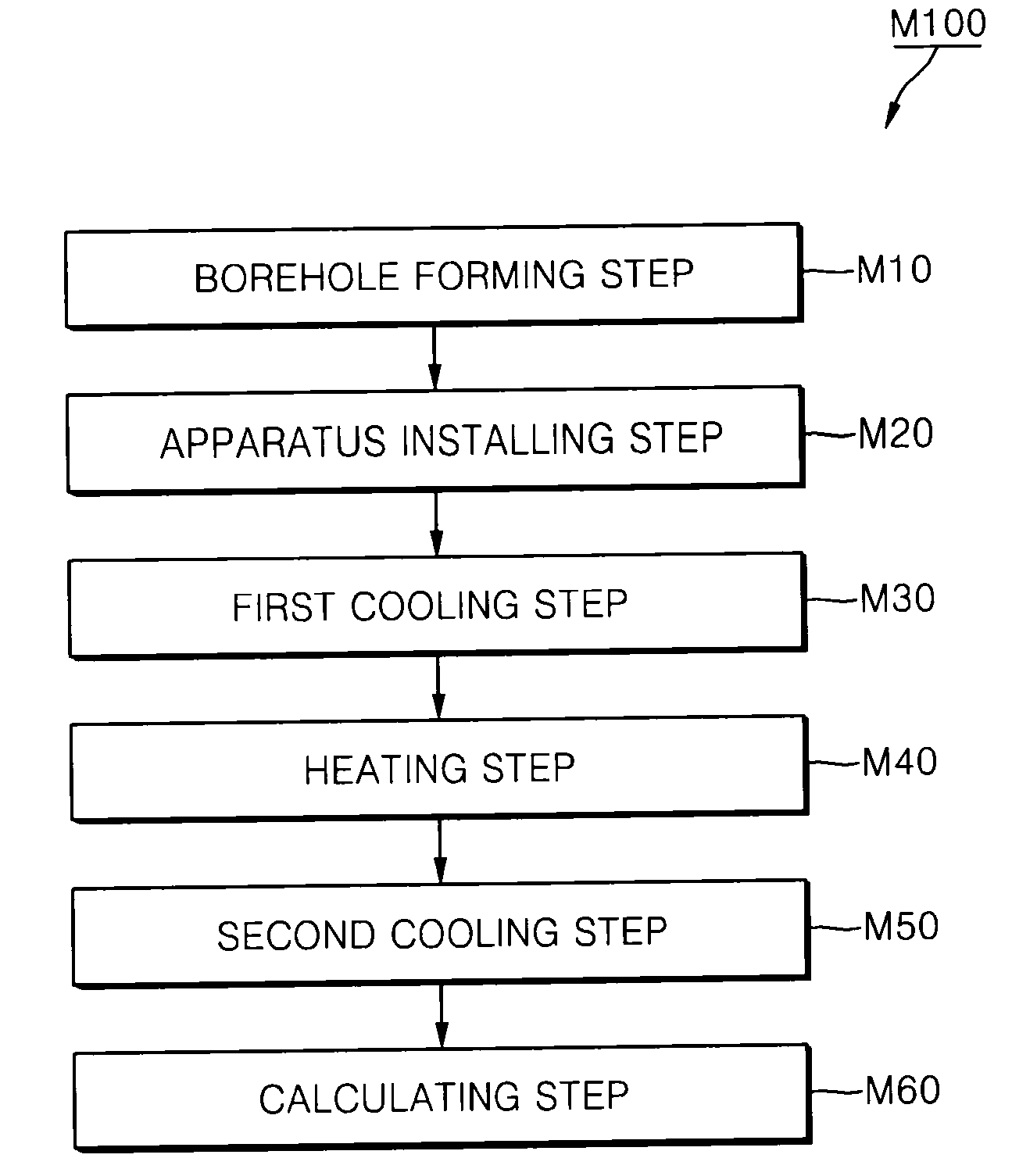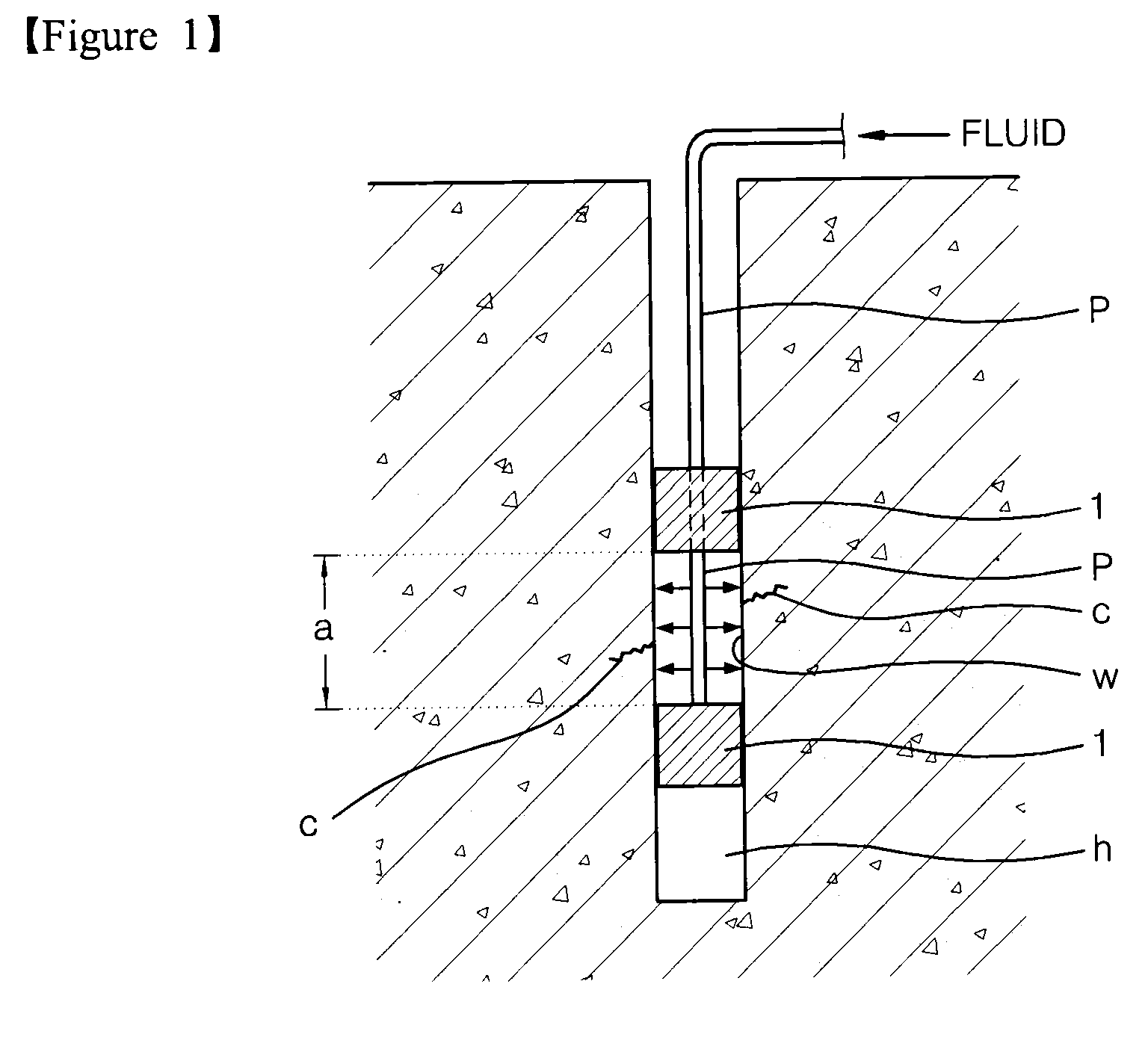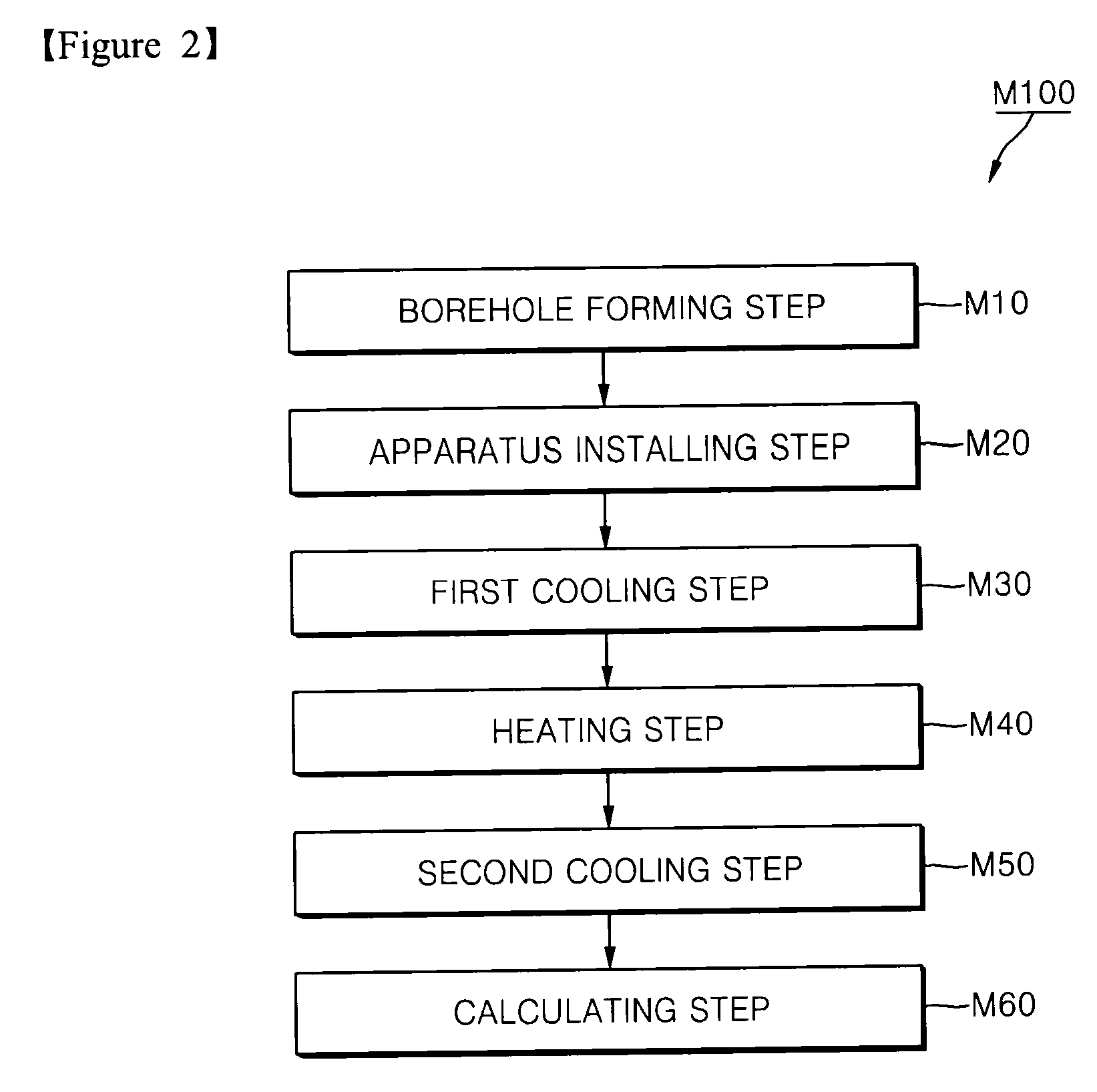Method and apparatus for measuring in-situ stress of rock using thermal crack
- Summary
- Abstract
- Description
- Claims
- Application Information
AI Technical Summary
Benefits of technology
Problems solved by technology
Method used
Image
Examples
Embodiment Construction
]
[0047]Hereinafter, an apparatus for measuring in-situ stress in rock using a thermal crack according to an exemplary embodiment of the present invention will be described with reference to the accompanying drawings, and than a measuring method using the apparatus will be described in greater detail.
[0048]FIG. 4 is a schematic view illustrating an apparatus for measuring in-situ stress in rock using a thermal crack according to an exemplary embodiment of the present invention, wherein FIG. 4A shows the state in which a coolant container is expanded, and FIG. 4B shows the state in which a coolant container is contracted. FIG. 5 is a schematic cross-sectional view taken along line V-V of FIG. 4A. FIG. 6 is an exploded perspective view illustrating the coolant container, the main part of the in-situ stress measuring apparatus illustrated in FIG. 4.
[0049]Referring to FIGS. 4 through 6, an apparatus 100 for measuring in-situ stress in rock using a thermal crack according to an exemplary ...
PUM
 Login to View More
Login to View More Abstract
Description
Claims
Application Information
 Login to View More
Login to View More - R&D
- Intellectual Property
- Life Sciences
- Materials
- Tech Scout
- Unparalleled Data Quality
- Higher Quality Content
- 60% Fewer Hallucinations
Browse by: Latest US Patents, China's latest patents, Technical Efficacy Thesaurus, Application Domain, Technology Topic, Popular Technical Reports.
© 2025 PatSnap. All rights reserved.Legal|Privacy policy|Modern Slavery Act Transparency Statement|Sitemap|About US| Contact US: help@patsnap.com



